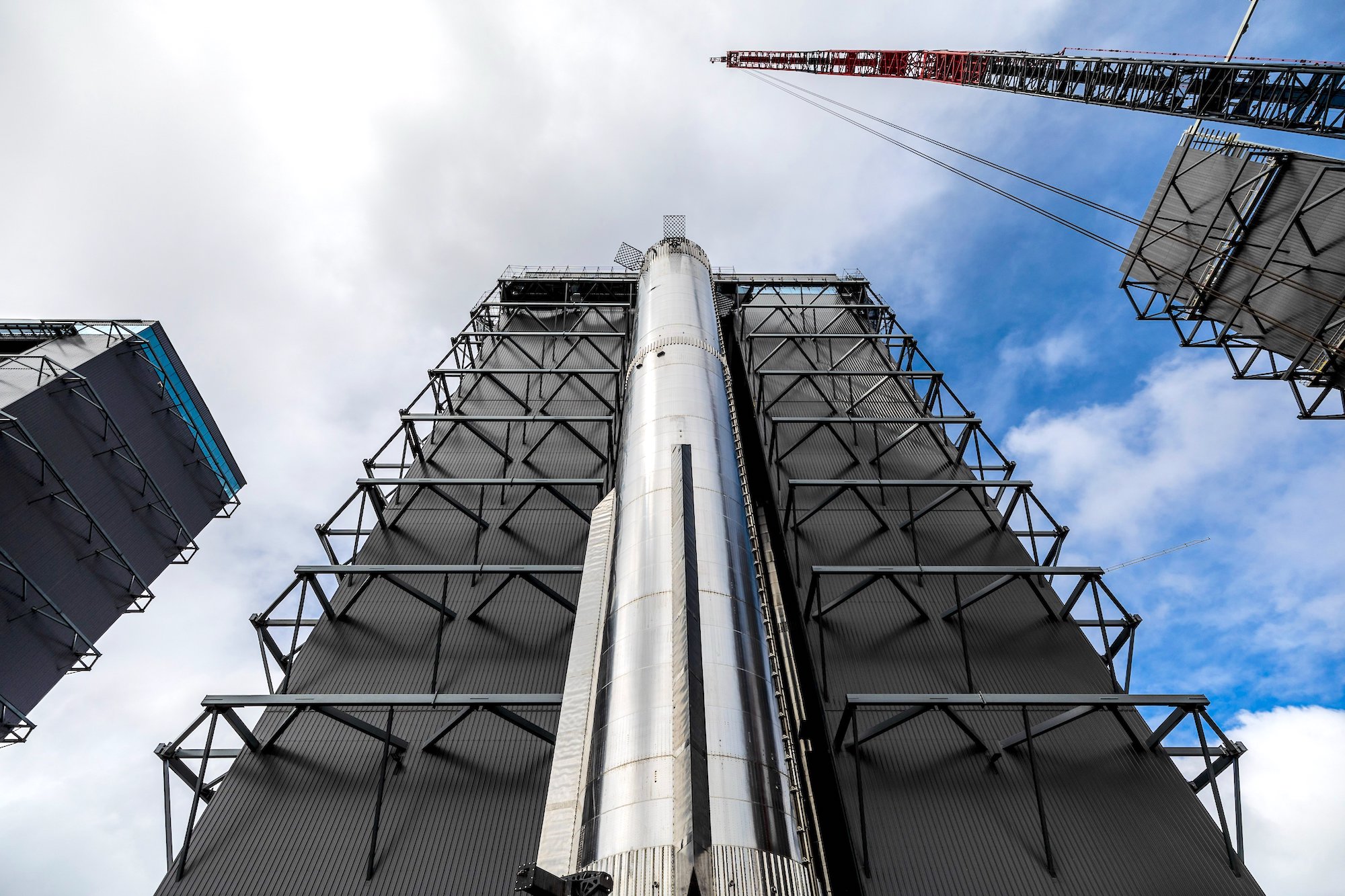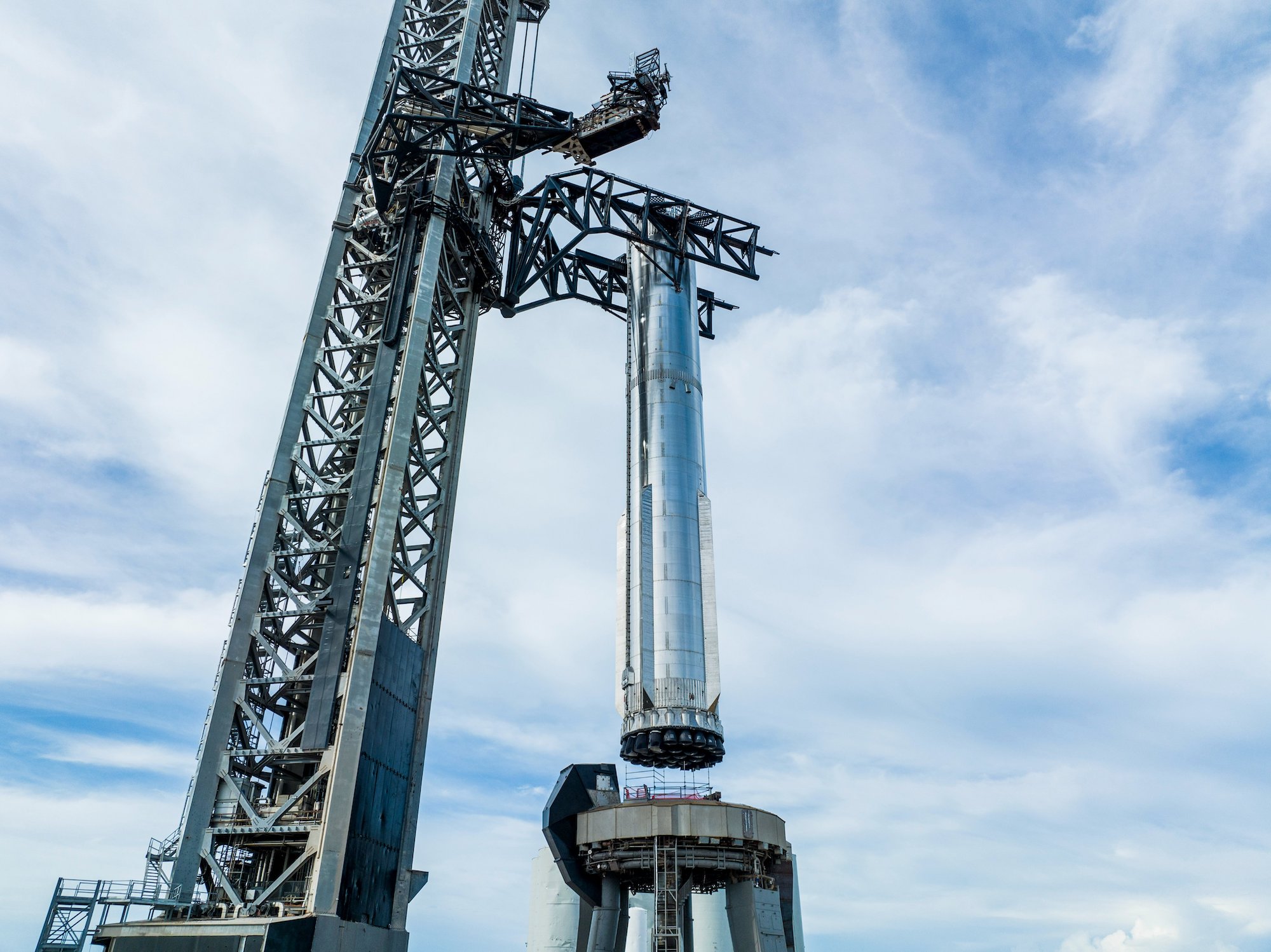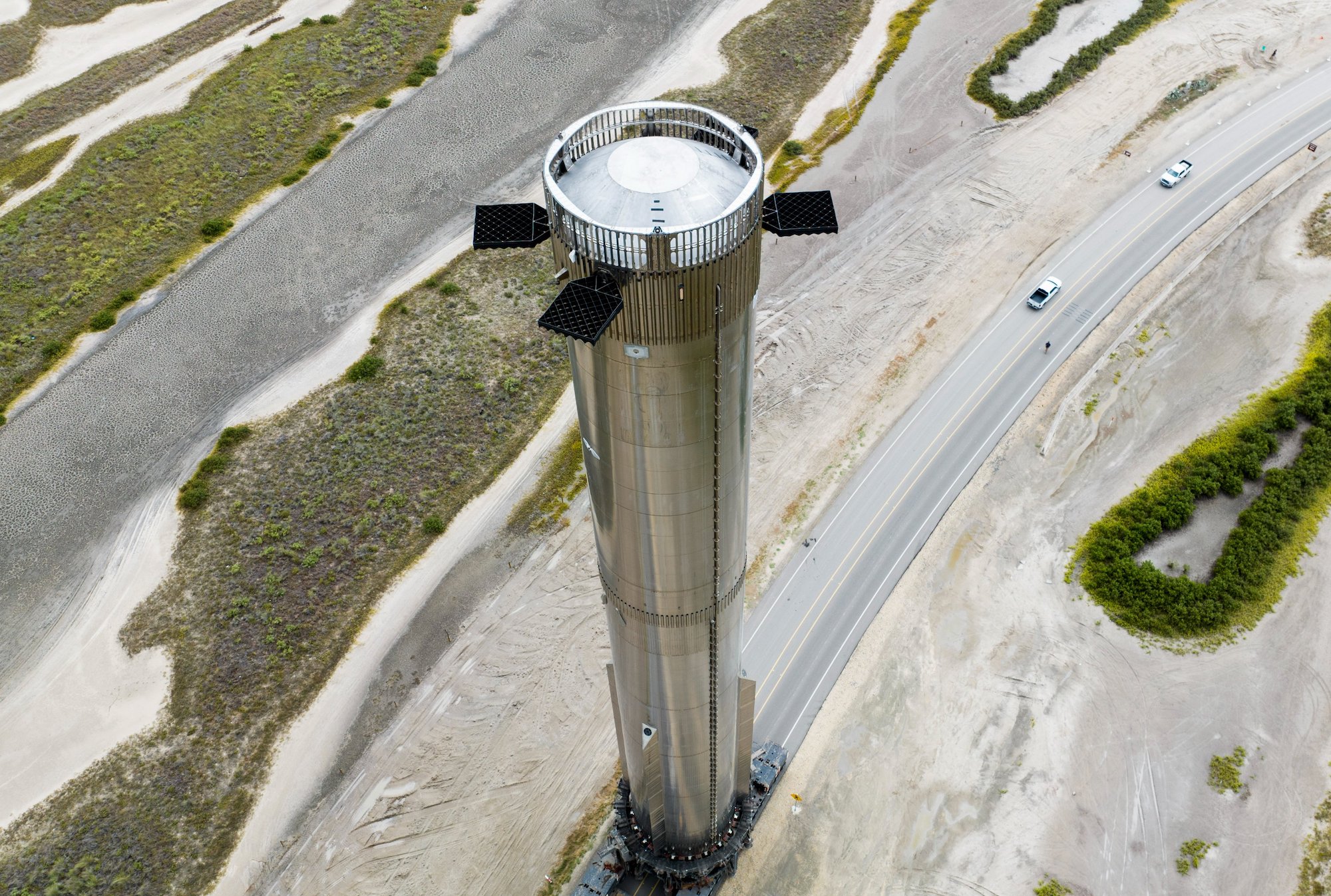SpaceX has shared a cool set of images showing its mighty Super Heavy booster ahead of its second test flight.
The most powerful rocket ever built, which stands at 120 meters, was recently moved to the launchpad for additional testing in preparation for its next flight, possibly in the coming months.
“Super Heavy Booster 9 transported back to the orbital launch pad at Starbase for additional preflight testing,” the private spaceflight company said in a post on X, the platform formerly known as Twitter.
Super Heavy Booster 9 transported back to the orbital launch pad at Starbase for additional preflight testing pic.twitter.com/C30Gh5i9Cb
— SpaceX (@SpaceX) August 23, 2023
The first-stage Super Heavy booster and upper-stage Starship is collectively known as the Starship and when ready is expected to carry crew and cargo to the moon, Mars, and possibly beyond.
But before that can happen, plenty of testing has to take place.
During its first attempt at an orbital flight in April, the Starship suffered a dramatic midair failure just minutes after leaving the launchpad at SpaceX’s Starbase facility in Boca Chica, Texas.
Despite the mishap, the company heralded the mission as a success simply for clearing the launchpad. The several minutes of flight gave SpaceX engineers enough data to work with to refine the rocket’s design and flight systems, and so there’s increasing hope that the vehicle will actually make it to orbit next time around.
Since the Starship’s failed mission four months ago, SpaceX has already been busy conducting additional Super Heavy engine tests, as shown in this video clip.
The ground-based test fire of the Super Heavy’s powerful Raptor engines also put a new, more robust launchpad through its paces after the last one was wrecked by the sheer force and pressure generated during April’s launch.
Before SpaceX can send the Super Heavy skyward for the second time, it needs clearance from the Federal Aviation Administration (FAA), which is currently assessing the impact of the first launch on the surrounding area. Environmentalist groups recently sued the FAA, claiming that it failed to properly analyze the environmental damage that SpaceX’s Starship would cause to the surrounding area prior to the first test launch, which saw debris fall on a wide area following the launchpad’s disintegration.






